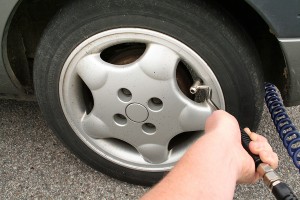Keep your car safe: insure, protect and maintain Cars are not infallible. But take a few precautionary measures and your vehicle stands a much better chance of staying out of harm’s way. Keep robbers at

Cars are not infallible. But take a few precautionary measures and your vehicle stands a much better chance of staying out of harm’s way.
Keep robbers at bay
We are slowly but surely winning the war on vehicle theft. According to ACPO Vehicle Crime Intelligence Service, approximately 120,000 vehicles were stolen in 2010, compared with 378,000 vehicles in 1997.
The massive decrease is most probably the result of better anti-theft devices, which could be well worth the investment if you live in a high crime, urban area. They should also lower your <a href=”http://www.
No longer prone to going off whenever they feel like it, these days when you hear a car alarm, it indicates that someone might be trying to break into the vehicle, rather than it being disturbed by a slight breeze.
• An immobiliser – These devices, as the name suggests, stop your car from moving and there are two types.
First, there’s the cheap mechanical kind, which locks onto your steering wheel, thus preventing movement. Often bright yellow, they act as a visual deterrent against opportunist thieves, but professional ones know how to crack them.
Then there are the electronic immobilisers, which sometimes come built-in. These use a microchip in the car key to signal to the engine to start. This means that only your car key will work and if someone tries to start your car in any other way, the engine will be disabled.
Alternatively, you can have an ignition kill-switch fitted.
• A tracker – Trackers are really handy if your vehicle is stolen. Electronic trackers plot your car’s every move using the Global Positioning System (GPS), so you can find its exact location.
• Vehicle identification numbers – Etching a vehicle identification number (VIN) onto your car’s windscreen, side glass and rear window is a more basic deterrent. It’s inexpensive and is offputting to car thieves, as they won’t want to spend money getting the windows replaced.
Be cautious on the road
Driving badly covers a whole host of horrors, including speeding, going too slowly, failing to indicate, cutting up other drivers, tailgating, driving through red lights and being generally aggressive on the road.
If you go against good driving etiquette, you’ll endanger yourself, your car, plus any other road users and vehicles. So be prudent, patient and kind on the road.
Be especially attentive when it’s wet, icy or snowy, as the roads will be slippery and visibility will be reduced. Wind, fog and even sunshine can also affect visibility.
Never take your hands off the wheel or your eyes off the road. Any distraction, whether it’s eating food or checking your text messages, can cause a crash.
And only drive when you’re completely and utterly alert. Alcohol and drugs will obviously cause you to be much less vigilant – which is why it is an offence to drive under their influence – but so does tiredness. Pull over in a safe place whenever you need a break.
Look after your vehicle
Get your car serviced once a year, says The Highways Agency. But between services, you should do a little maintenance yourself – or ask someone else to do it. Here’s how…
• Check your tyres, ensuring they’re inflated to the manufacturer’s recommended pressure and have at least 3mm of tread.
• Test your battery – most last between two and four years.
• Top up the water for your windscreen wipers and check the blades aren’t too worn.
• Regularly clean your windows to ensure good visibility.
• Clean your lights and check the bulbs, as they might not be working.
• Before the cold weather sets in, change the anti-freeze in your radiator.
Author Bio:
Tara Nathanson writes for Sainsbury’s Money Matters blog on a range of topics including car insurance, car safety and other motoring topics. In her spare time she likes going to the cinema and doing yoga and Zumba classes, and at weekends she likes hanging out with her six-year-old son.
Guest post by Sainsburys Finance.
